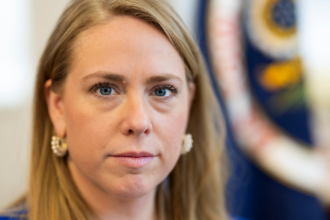Borrowers who recently became eligible for student loan forgiveness will not have to pay taxes on discharged loans, the Trump administration has confirmed.
The Department of Education said last week it will again start processing loan forgiveness for eligible borrowers in two different income-driven repayment plans that it had put on pause.
Those who become eligible for loan forgiveness this year will not owe federal taxes on the total amount forgiven, the department said on Oct. 17.
The policy applies to borrowers on the Income-Contingent Repayment or Pay as You Earn plans who made qualifying payments for 20 to 25 years.
Borrowers have been spared from paying taxes on forgiven loans by a 2021 provision in former President Joe Biden’s $1.9 trillion stimulus bill.
That protection is slated to expire at the end of 2025.
The Department of Education told The Post it is complying with the law, since Biden’s American Rescue Plan Act made discharges nontaxable from Jan. 1, 2021 through Dec. 31, 2025.
While many borrowers have recently become eligible for loan forgiveness, some are still waiting for their balances to adjust.
So borrowers have been panicking over whether they could be forced to pay taxes on discharged loans in 2026 if their loan balances aren’t canceled out by the end of this year.
In its agreement last week, the White House clarified that “the date a borrower becomes eligible to have their loans cancelled under the IBR, Original ICR, or PAYE plans constitutes the effective date of their loan discharge.”
While they won’t be charged federal taxes, borrowers in certain states may have to pay state income taxes on the forgiven loans.
If borrowers receive a 1099 form or some indication that they are being taxed by the federal government on their discharged loans, they should file a complaint with their state’s attorney general.
But that does not apply to the roughly 8 million Americans who rely on the Biden-era SAVE plan, which is currently blocked by federal courts. Trump’s “big, beautiful” bill is set to end the SAVE program altogether.
To avoid paying taxes on forgiven loans, borrowers on the SAVE plan can switch to a different income-driven repayment plan before the end of this year.
More than 13 million Americans rely on income-driven repayment plans for their student loans, according to the National Consumer Law Center.
These plans calculate monthly payments for borrowers as a percentage of their discretionary income — between 10% and 15%.
IDR plans typically cancel any remaining debt after 20 or 25 years. There is no income cap, so these programs are widely used.
After an appeals court in February upheld a ruling that blocked SAVE, Trump’s Education Department argued that the ruling applied to other income-driven repayment programs, like Income-Contingent Repayment and Pay as You Earn.
These two plans have over 2.5 million enrollees total, a higher ed expert estimated.
The American Federation of Teachers – which has 1.8 million members, including teachers, healthcare employees and public workers – sued the Trump administration to restart debt cancellation.
The Education Department reached an agreement with the AFT last week to restart its processing of loan forgiveness.










